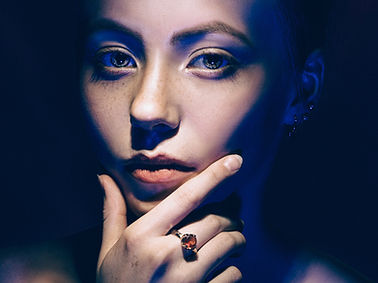.png)
Creative Lighting Techniques

Hard Light
Hard light is a type of bright light that creates precise, dark shadows. When something is illuminated by a hard light, it forms a strong, defined shadow. This light is often used to make scenes look dramatic and intense, like in scary movies or photographs with strong contrasts. It is different from soft light, which is more gentle and creates softer shadows. Hard light comes from a focused light source, like a spotlight or direct sunlight on a clear day, and it makes things stand out with sharp edges and deep shadows.
Soft Light
Soft light refers to a gentle and diffused type of illumination that creates smoother shadows and gradual transitions between light and dark areas. It is achieved by using a larger light source in relation to the subject being lit. A bigger light source, such as a softbox or a cloudy sky, spreads the light over a larger area, resulting in a softer and more even light distribution. This helps to reduce harsh shadows and create a more flattering and natural lighting effect. Soft light is often used in photography, especially for portraits and fashion shoots, as it helps to produce a soft and pleasing appearance by minimizing imperfections and providing a gentle ambiance.
The distance between the light source and the subject also plays a role in determining the quality of soft light. When the light source is placed closer to the subject, it allows the light to wrap around the subject, further diffusing the light and producing a softer illumination. This proximity helps to minimize shadows and create a more flattering and subtle lighting effect. Overall, soft light is favored for its ability to create a pleasing and gentle atmosphere, making it a popular choice in various creative fields where a natural and flattering look is desired.


Shadow
Using shadows to create contrast in your images is an effective technique for adding depth and visual interest. While it's generally desirable to have sufficient light in photography, having contrasting areas of brightness and darkness can enhance the overall impact of your composition.
When composing your image, consider what elements you want to appear darker and what you want to highlight with illumination. By intentionally positioning your subjects or lights, you can manipulate the interplay of light and shadow to create the desired contrast. Visualize the scene in your mind and experiment with different arrangements until you achieve the desired effect. Over time, this process will become more intuitive and natural to you as a photographer.
Contrast adds a sense of drama and dimension to your photos, making them more engaging and visually striking. By incorporating shadows and playing with the interplay between light and dark, you can create a dynamic and captivating composition that draws the viewer's attention and adds depth to your images. So, don't be afraid to embrace shadows as an essential tool in your photographic arsenal for creating contrast and adding visual impact to your work.